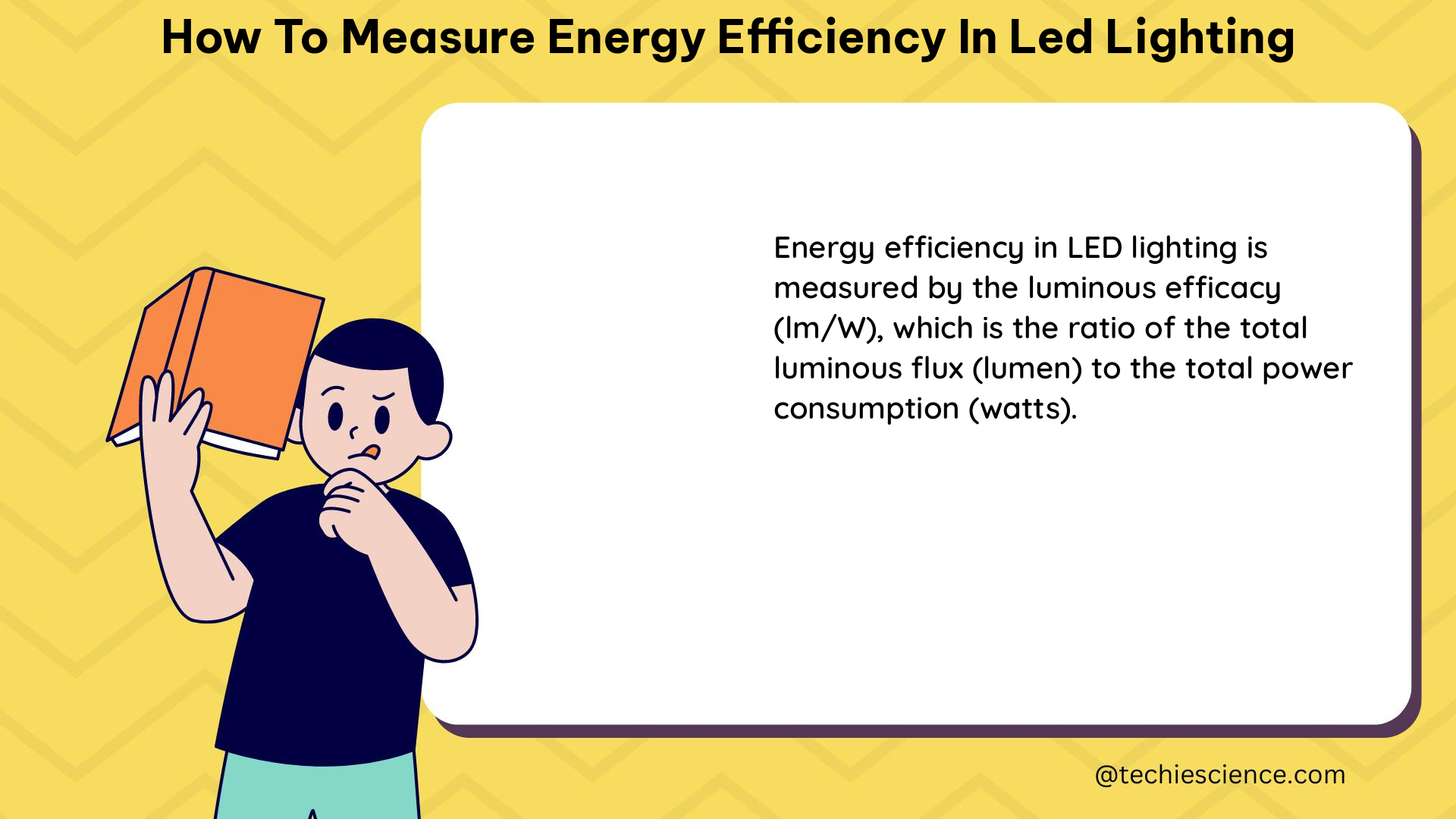The energy efficiency of LED lighting is a crucial factor to consider when selecting the right lighting solution for any application. To measure the energy efficiency of LED lighting, the most common metric used is efficacy, which is the ratio of emitted flux (lumens) to power draw (watts). This metric allows for the comparison of the energy efficiency of different LED products, as well as the comparison of LED products to conventional lighting technologies.
Understanding LED Package Efficacy vs. Luminaire Efficacy
When measuring the efficacy of LED packages (the individual nodes that make up an LED product), it is essential to consider the difference between the efficacy of the package and the efficacy of an integrated LED lamp or an LED luminaire. The efficacy of the LED package does not account for the losses associated with the driver, thermal management, and optical components of the complete lighting system.
The efficacy of an integrated LED lamp or luminaire is typically lower than the efficacy of the LED package itself, as it includes these additional system-level losses. To accurately compare the energy efficiency of LED products, it is crucial to consider the total luminaire efficacy, which takes into account the entire lighting system.
Factors Affecting LED Efficacy

The efficacy of both LED packages and complete LED products depends on several factors, including:
-
Electrical Efficiency: The efficiency of the electrical components, such as the driver and power supply, plays a significant role in the overall energy efficiency of the LED lighting system.
-
Internal Quantum Efficiency: This refers to the efficiency with which the LED package converts electrical energy into light energy within the semiconductor material.
-
Spectral Efficiency: The spectral distribution of the emitted light can impact the perceived brightness and energy efficiency. Optimizing the spectral output can improve the overall efficacy of the LED lighting system.
LED Efficacy Targets and Comparisons
The U.S. Department of Energy has established target LED package efficacy of 266 lm/W, with LED luminaire efficacy exceeding 200 lm/W. These targets represent significant improvements over the efficacy of current linear fluorescent, compact fluorescent, high-intensity discharge (HID), and incandescent sources, which are generally considered mature technologies with less opportunity for improved performance.
When comparing the efficacy of LED and conventional lighting products, it is essential to consider the entire system, including the efficiency of the luminaire and the properties of the lamp. The best way to make these comparisons is to calculate the total luminaire efficacy, which takes into account the entire lighting system.
Measuring LED Efficacy
To measure the efficacy of an LED lighting product, the following steps can be followed:
-
Measure the Luminous Flux: Determine the total amount of light emitted by the LED product, typically measured in lumens (lm).
-
Measure the Power Draw: Measure the total power consumed by the LED product, typically measured in watts (W).
-
Calculate Efficacy: Divide the luminous flux (lm) by the power draw (W) to obtain the efficacy in lumens per watt (lm/W).
It is important to note that the procedures and conditions used for measuring conventional and LED products can differ, and it is crucial to understand these differences when making comparisons.
Considering the Entire Lighting System
While efficacy is related to energy efficiency, it cannot be used to establish the actual energy use of an LED lighting system. Energy use is the power draw over time, typically reported in kilowatt-hours (kWh). Control systems, such as dimming and occupancy sensors, can be an important tool for realizing energy savings, and making comparisons between products should consider the entire lighting system.
Practical Examples and Numerical Problems
To illustrate the concepts of measuring energy efficiency in LED lighting, let’s consider the following examples:
Example 1: Calculating LED Package Efficacy
– An LED package has a luminous flux of 150 lumens and a power draw of 2 watts.
– Efficacy of the LED package = 150 lumens / 2 watts = 75 lm/W
Example 2: Calculating LED Luminaire Efficacy
– An LED luminaire has a luminous flux of 8,000 lumens and a power draw of 50 watts.
– Efficacy of the LED luminaire = 8,000 lumens / 50 watts = 160 lm/W
Example 3: Comparing LED and Conventional Lighting Efficacy
– A linear fluorescent lamp has a luminous flux of 3,000 lumens and a power draw of 32 watts.
– Efficacy of the linear fluorescent lamp = 3,000 lumens / 32 watts = 93.75 lm/W
– Comparing the LED luminaire from Example 2 to the linear fluorescent lamp, the LED luminaire has a significantly higher efficacy of 160 lm/W.
These examples demonstrate the importance of considering the entire lighting system when measuring and comparing the energy efficiency of LED and conventional lighting products.
Conclusion
Measuring the energy efficiency of LED lighting is a crucial step in selecting the right lighting solution for any application. By understanding the concepts of LED package efficacy, luminaire efficacy, and the factors that affect LED efficacy, you can make informed decisions and ensure that your LED lighting systems are operating at their optimal energy efficiency.
References:
- Energy Efficiency of LEDs. (n.d.). Retrieved from https://www1.eere.energy.gov/buildings/publications/pdfs/ssl/led_energy_efficiency.pdf
- Guidebook for Energy Efficiency Evaluation, Measurement, and … (n.d.). Retrieved from https://www.epa.gov/sites/default/files/2019-06/documents/guidebook_for_energy_efficiency_evaluation_measurement_verification.pdf
- How to Calculate the Efficacy of an LED Light Fixture – Lumenture. (2023, April 26). Retrieved from https://lumenture.com/blog/how-to-calculate-efficacy-of-an-led/.

The lambdageeks.com Core SME Team is a group of experienced subject matter experts from diverse scientific and technical fields including Physics, Chemistry, Technology,Electronics & Electrical Engineering, Automotive, Mechanical Engineering. Our team collaborates to create high-quality, well-researched articles on a wide range of science and technology topics for the lambdageeks.com website.
All Our Senior SME are having more than 7 Years of experience in the respective fields . They are either Working Industry Professionals or assocaited With different Universities. Refer Our Authors Page to get to know About our Core SMEs.